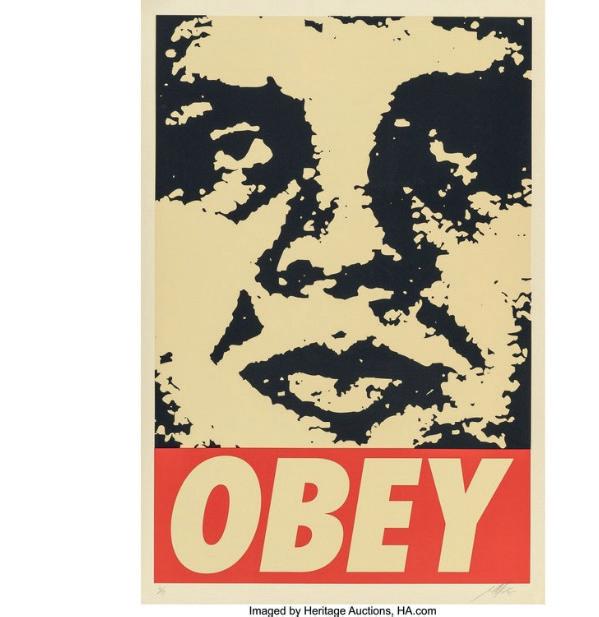
2 minute read
SHEPARD FAREY OBEY AND THE ART OF PROPAGANDA
from GATEmag n° 30
by GATEmagIta
A mysterious poster urging New Yorkers to obey. A notice from the authorities? No, counterculture that becomes a rebel brand
It is 1989 when a mysterious poster appears in the streets of New York City. Within a few hours others follow and a few days later the whole city is covered with subliminal messages that urge people to “obey”. The authorities are quick to draw attention, but those who already hang out in New York’s counterculture would have bet that it was another affront to the establishment by Mr. Shepard Fairey.
“Art is not always meant to be decorative or soothing. In fact, it can also create conversations and arouse uncomfortable emotions”. This was the motto of the artist, who during his years at the Rhode Island School of Design had approached the world of graffi ti, street art and stickers. And it is through these last that Farey “bombards”, without authorization, hundreds of places around the Big Apple, collecting almost 20 arrests. He regularly pasted the face of the icon Obey “Andre the Giant”, created from the iconic image of the wrestler André René Roussimoff, on the advertisements of major American companies. On one occasion, he even added this face to a series of Sprite billboards, whose slogan just said “obey your thirst”.
His design, which was born as political and irreverent and used the picture of the wrestler “Andre The Giant” as the main iconography, has given birth within a few years to an independent clothing brand, which had the same name. Appropriating the style of the punk band stickers of the 80s and hybridizing them to the pop taste of artists like Andy Warhol, Shepard Fairey went to create a new “ aesthetic of propaganda “, which was paradoxically accessible and democratic.
OBEY becomes the slogan of this “propaganda campaign” that quickly crosses the national borders: “obey”, was intimated by Shepard’s posters and later by his T-shirts, began to spread around the globe. One of the major inspirations for Fairy was the fi lm “They Live”, directed by John Carpenter. In the plot, the protagonist named Roddy finds a pair of sunglasses, wearing which he sees the world for what it is, without falsehood or embellishments. In this parallel universe, people are forced to obey some extraterrestrial forces that want to take power all over the planet.
Through the OBEY brand, Shepard Fairey tried to talk about and with multiple subcultures, creating and developing his first collection together with designers Mike Ternosky and Erin Wignol, who shared with him the ideals, dreams and philosophy of the brand. Women’s and men’s clothing come together in a genderless style typical of streetwear. OBEY baseball caps and hats become a must-have for a whole generation of skaters and surfers. Each element of the collection is the result of a mixture of military style, work clothes and the conception of modern art that Shepard Fairey owns.
After gaining popularity in the underground world, OBEY begins to be present also at the most important multibrand retailers such as Urban Outfi tters and PacSun, and begins to test its concept by spreading popup stores in different European countries and also also in Italy, more precisely in Milan. It was only in 2018 that he opened his first monobrand store in Paris, in the northern part of the 3rd arrondissement, a stone’s throw from Place de la République. A strategic choice, both because in the same neighborhood there are already some of the landmark shops in the streetwear world, and because that square has become, after its redevelopment, a real meeting point for the Parisian skater community. In addition to the clothes, the store sells every Thursday a new OBEY poster in a limited edition of 40 pieces, which - of course – is always sold out very quickly.











